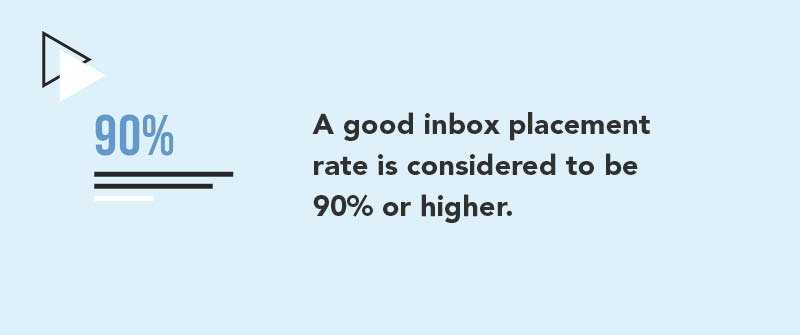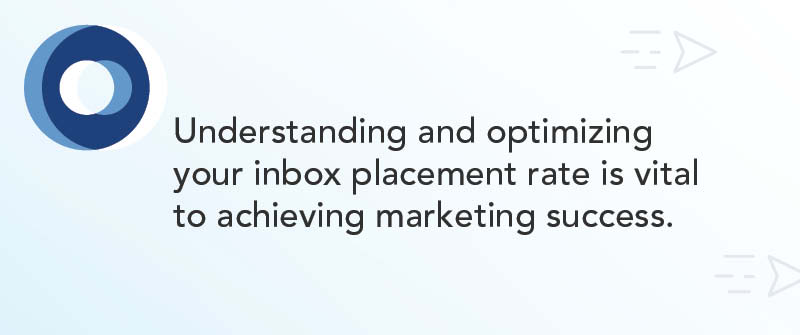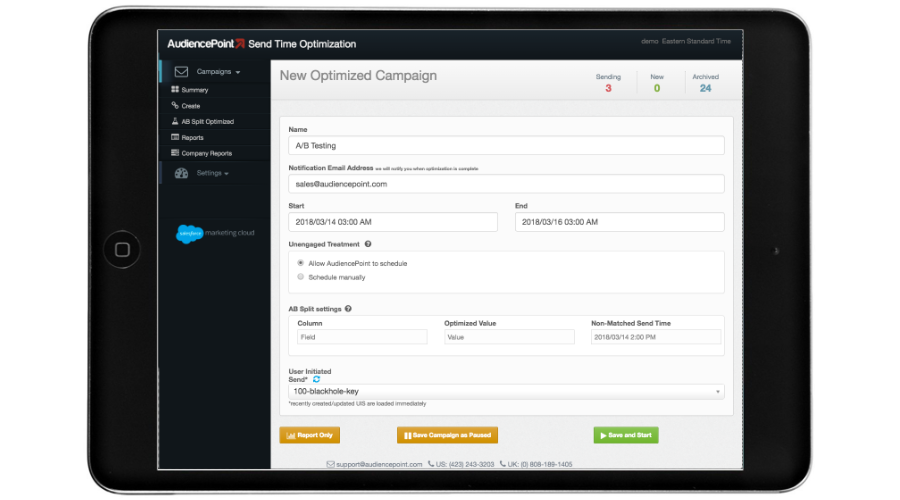AudiencePoint is thrilled to announce our new integration with Klaviyo! AudiencePoint is looking for partners to pilot our...
What Is An Inbox Placement Rate?
The inbox placement rate is a critical metric in an email marketing strategy that measures the percentage of sent emails that successfully land in the recipient’s inbox. Unlike the mere delivery rate, which indicates emails accepted by the recipient’s server, the inbox placement rate goes a step further to evaluate how many of those emails reach the main inbox, bypassing the spam or junk folders. This metric provides a more accurate reflection of an email campaign’s success as it directly influences open rates, engagement, and conversion.
Difference between Delivery Rate and Placement Rate
Many digital marketers confuse the delivery rate with the inbox placement rate. The delivery rate is the percentage of emails genuinely received by the recipient’s email server. An email might be ‘delivered’ but end up in the spam folder; hence, it is not seen by the user. In contrast, the inbox placement rate shines a light on the quality and relevance of the emails in the eyes of email service providers (ESPs) by showcasing how many manage to avoid being marked as spam.
Importance in Email Marketing
The significance of the inbox placement rate in email marketing cannot be overstated. Obtaining consent from recipients is essential for running a legitimate email marketing campaign. Higher rates correlate with better deliverability standards, increased engagement, and, ultimately, better return on investment (ROI) from email campaigns. Email senders with high placement rates often experience higher open and conversion rates due to more emails being visible to the target audience. Therefore, maintaining and improving these rates is crucial for any email marketer aiming for a successful campaign. A good inbox placement rate is considered to be 90% or higher.

What Is The Average Email Delivery Rate?
The email delivery rate is a key performance metric within email marketing that signifies the percentage of emails successfully delivered to recipients’ email servers. An understanding of this metric is vital for ensuring the effectiveness of your email marketing strategy. Several factors influence the email delivery rate, including the recipient’s server response, the sender’s domain reputation, and the health of the email list. Factors such as sender reputation, email authentication, and engagement also affect inbox placement, leading to better inbox placement rates when optimized.
Typical Delivery Rates Across Industries
What is a good email deliverability score? Delivery rates can vary considerably across different industries. On average, businesses can expect delivery rates to hover between 80% to 95%. Email deliverability for e-commerce and finance generally have higher delivery rates due to well-maintained email lists and stringent authentication measures. However, industries with frequent list churn or less engaged audiences may report lower figures.
Factors Affecting Delivery Rates
Several factors can affect the average delivery rate. Key considerations include the quality of your email list, which must be free from stale or erroneous addresses, and the proper configuration of domain and email protocols like SPF (Sender Policy Framework) and DKIM (DomainKeys Identified Mail). Mailbox providers use algorithms to assess negative engagement signals, leading to the potential misplacement of emails into spam or promotional folders. Each of these elements contributes significantly to how spam filters evaluate incoming emails, thus impacting your overall delivery rate. High spam complaints can severely damage a sender’s reputation and inbox placement rates, ultimately affecting the effectiveness of email campaigns.
Comparison with Inbox Placement Rates
While a high delivery rate is desirable, it does not guarantee that emails land in the recipient’s primary inbox. This is where inbox placement rates come into play, representing the subset of delivered emails that avoid spam or junk folders. Achieving high inbox placement thus requires supplementing delivery strategies with enhanced content quality, list segmentation, and engagement tactics.
What Is A Good Inbox Rate?
In email marketing, achieving a high inbox rate is crucial to ensuring your messages not only reach their destination but also have the intended impact. An inbox rate, also referred to as the inbox percentage, is a critical metric that quantifies the percentage of your emails that successfully make it past spam filters and land in the recipient’s inbox.
Benchmark Rates for Different Email Platforms
Knowing what constitutes a good inbox rate can vary slightly depending on the platform being used. Generally, a healthy inbox rate is around 95% and above, meaning that a vast majority of emails sent should ideally reach the recipient’s primary inbox. However, complexities such as algorithm changes in email clients and evolving spam filters can alter this figure.
Comparison of Gmail and Outlook Placement Rates
Which email provider has the best deliverability? When comparing email clients, Gmail and Outlook often have distinct considerations. Gmail is renowned for its stringent filtering mechanisms; thus, maintaining an inbox rate above 90% is excellent. On the other hand, Outlook’s policies might allow for a slightly more lenient filtration, but maintaining a similar range is advisable to ensure effective email marketing performance. Understanding these differences is crucial for efficiently strategizing your email campaigns.
Strategies to Achieve a Good Inbox Rate
Enhancing your inbox placement rate involves a blend of technical optimizations and strategic planning. Start with using well-validated lists and ensuring that your recipient addresses are accurate. It’s also vital to authenticate your emails using methods such as SPF, DKIM, and DMARC. Personalizing emails based on user preferences and segmenting your email lists based on relevant criteria can significantly improve engagement, which, in turn, positively impacts your inbox rate.
Regular analysis and staying updated with best practices in email marketing, such as crafting engaging subject lines and optimizing email content for different devices, can play a pivotal role in maintaining high inbox percentages. Employing these strategies ensures that your emails not only reach the primary inbox but also perform effectively once they are there.
Summary of Key Points
In the competitive world of email marketing, understanding and optimizing your inbox placement rate is vital to achieving marketing success. As discussed, the inbox placement rate is not the same as the delivery rate and provides a deeper insight into the true effectiveness of your campaigns. The difference between emails being delivered and those being placed in the inbox can significantly influence engagement rates and ROI. With average delivery rates maintaining certain industry benchmarks, focusing on the placement rate becomes imperative. Knowing the difference between inbox placement and deliverability can empower marketers to better strategize and enhance their overall campaign performance.

Emphasis on Maintaining High Inbox Rates
A strong inbox placement ensures your emails reach the intended audience, facilitating better engagement and conversions. Email marketers should aim for an average email deliverability rate that consistently meets industry benchmarks, which often involves careful management of sender reputation, thoughtful content strategy, and adherence to best practices for list management. Continually analyzing and refining your email marketing strategy helps in maintaining and improving these critical rates.
Final Recommendations for Improving Email Marketing Success
For effective email marketing, it is crucial to focus on personalized and relevant communication to engage your audience actively. Employing advanced segmentation techniques, employing an inbox placement test, checking your inbox service provider, understanding spam tramps, monitoring engagement rates closely, and ensuring email deliverability with anti-spam tools are part of a successful strategy. By honing these strategies, you can improve your inbox placement rates and, consequently, improve overall marketing results.
Unlock valuable insights into your subscribers’ inbox behaviors with AudiencePoint—the preeminent platform for email engagement analysis. Elevate your re-engagement strategies, optimize deliverability, and enhance revenue generation through our comprehensive data-driven tools. Contact AudiencePoint today!





